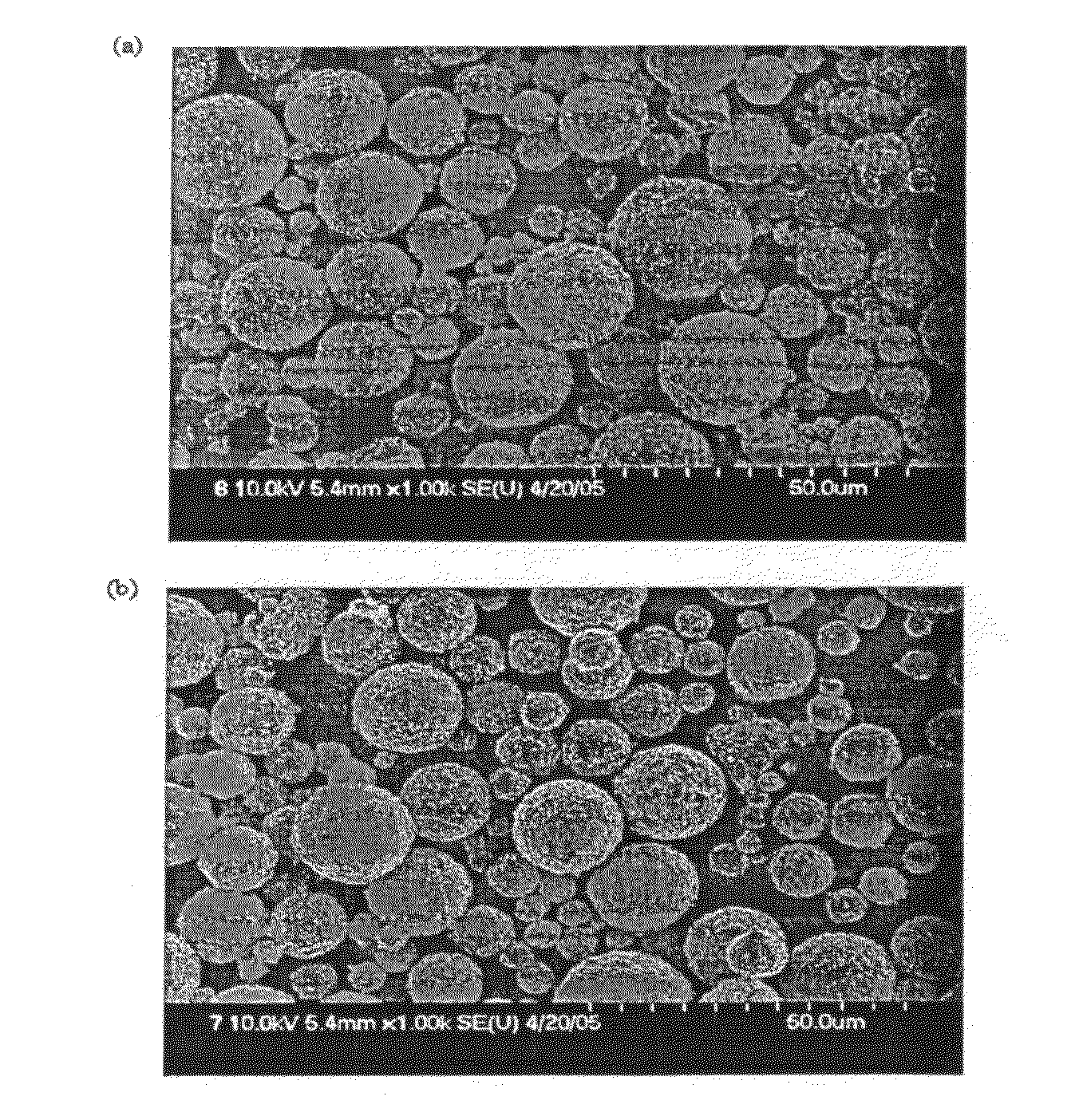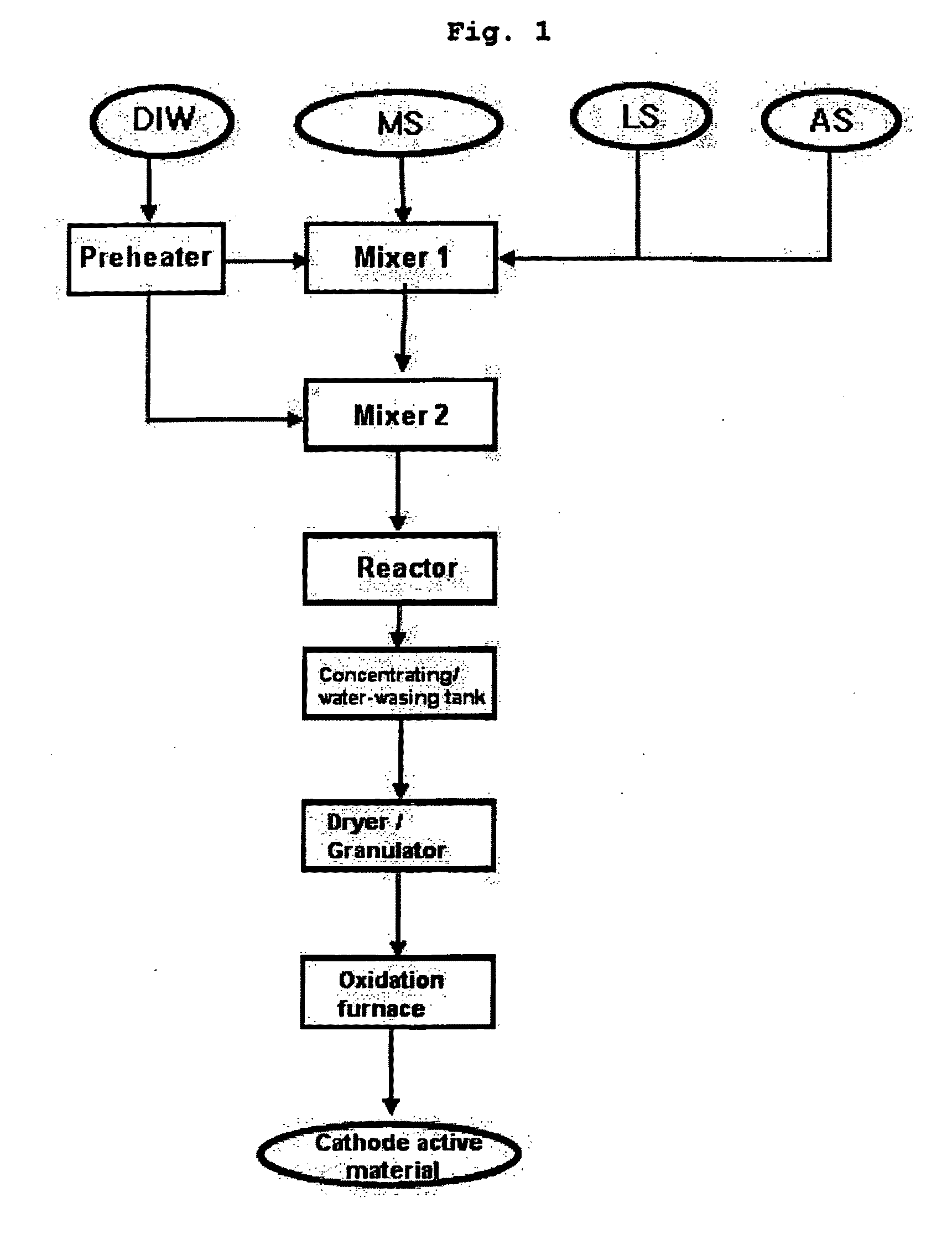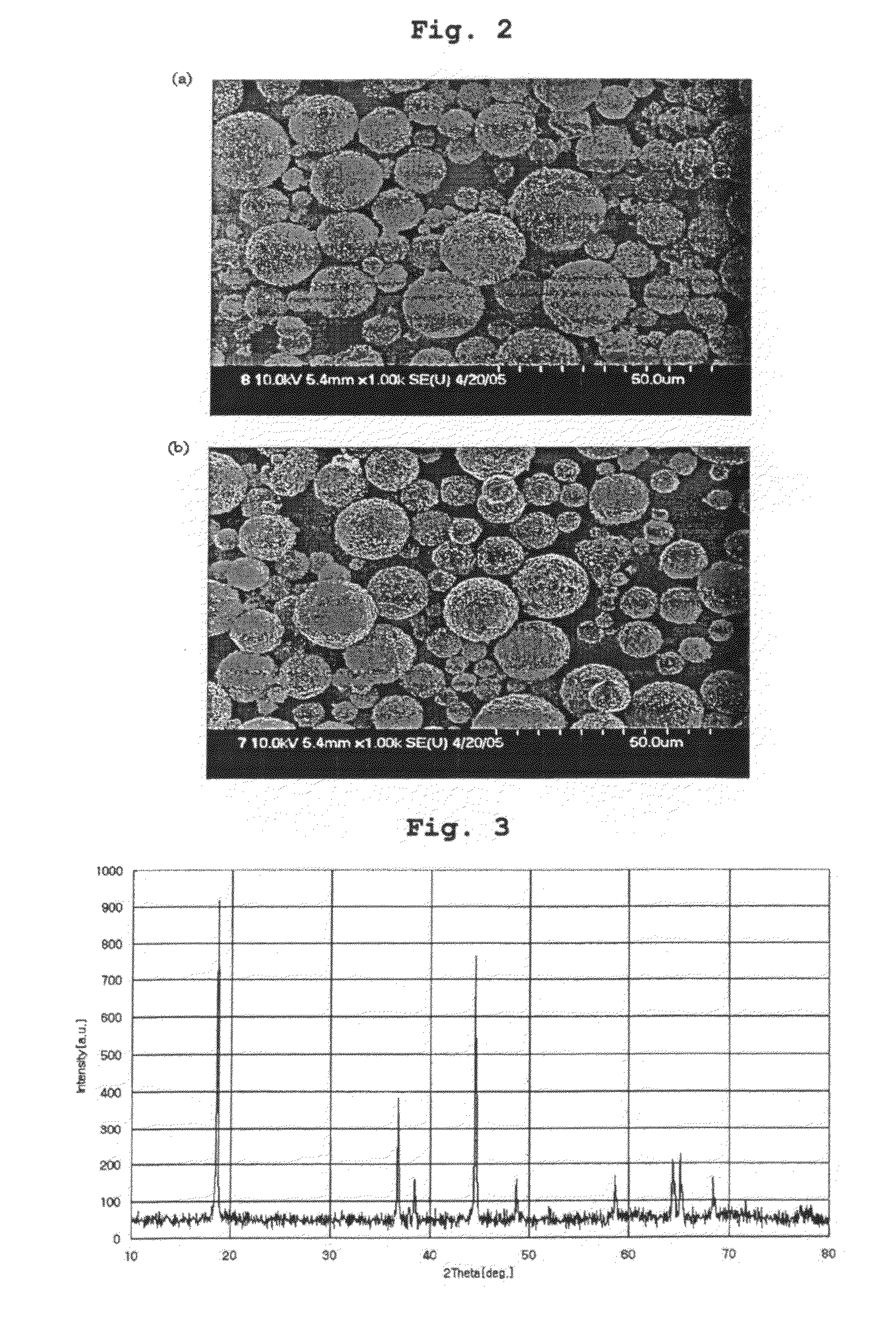Lithium-Metal Composite Oxides and Electrochemical Device Using the Same
a technology of lithium-metal composite oxides and electrochemical devices, which is applied in the direction of lithium compounds, magnetic bodies, natural mineral layered products, etc., can solve the problems of high cost of cobalt, difficult to obtain single-phase products, and demand for cobalt as a main component, and achieve excellent physical properties, long cycle life characteristics, and high capacity characteristics
- Summary
- Abstract
- Description
- Claims
- Application Information
AI Technical Summary
Benefits of technology
Problems solved by technology
Method used
Image
Examples
examples 1-2
Preparation of Lithium-Metal Composite oxide, cathode and lithium secondary battery
example 1
1-1. Preparation of Lithium-Metal Composite Oxide (LiNi1 / 3Mn1 / 3Co1 / 3O2)
[0093]FIG. 1 schematically shows a process for preparing a lithium-metal composite oxide according to the present invention.
[0094]An aqueous solution containing 7.0 parts by weight of cobalt nitrate (Co(NO3)2. 6H2O), 7.0 parts by weight of nickel nitrate (Ni(NO3)2.6H2O) and 6.9 parts by weight of manganese nitrate (Mn(NO3)2.6H2O) was pumped under pressure at a rate of 8 ml / min in conditions of room temperature and pressure of 250 bar, and a mixture solution containing 13.2 parts by weight of ammonia (NH3) water and 12.1 parts by weight of aqueous lithium hydroxide LiOH solution was pumped under pressure at a rate of 8 ml / min in conditions of room temperature and pressure of 250 bar, such that the solutions met each other in a first mixer. Herein, the NH3 / NO3 molar ratio was 1.5, and the Li / (Ni+Mn+Co) molar ratio was 4. To the mixture, ultrapure water heated to about 450° C. was pumped under pressure at a rate of ...
example 2
[0097]The concentrate synthesized in Example 1 was washed with clean water to remove the removing ions, and then LiOH was added in an aqueous solution in an amount of 0.3 moles per mole of the synthesized lithium-metal composite oxide. Then, the mixture was dried using a spray dryer at a temperature of 120° C. and at the same time, granulated. The granules were calcined in an oxidation furnace at 1000° C. for 6 hours, thus obtaining a lithium-metal composite oxide (Li[Ni1 / 3Mn1 / 3CO1 / 3]O2).
PUM
| Property | Measurement | Unit |
|---|---|---|
| Temperature | aaaaa | aaaaa |
| Fraction | aaaaa | aaaaa |
| Fraction | aaaaa | aaaaa |
Abstract
Description
Claims
Application Information
 Login to View More
Login to View More - R&D
- Intellectual Property
- Life Sciences
- Materials
- Tech Scout
- Unparalleled Data Quality
- Higher Quality Content
- 60% Fewer Hallucinations
Browse by: Latest US Patents, China's latest patents, Technical Efficacy Thesaurus, Application Domain, Technology Topic, Popular Technical Reports.
© 2025 PatSnap. All rights reserved.Legal|Privacy policy|Modern Slavery Act Transparency Statement|Sitemap|About US| Contact US: help@patsnap.com



